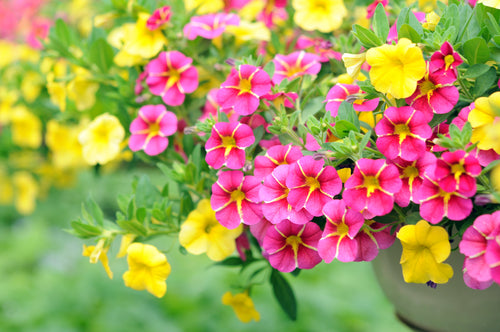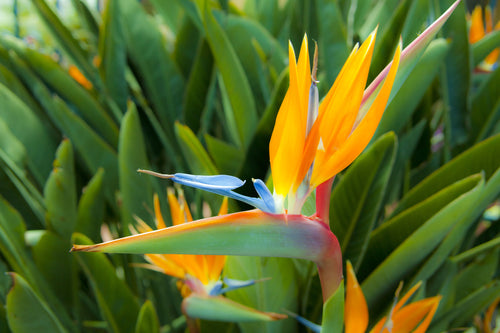Citrus Care Guide
(Lemon, Lime, Orange, Calamondins)
Dwarf Citrus trees can make very attractive container plants and kept at manageable sizes. In the Chicago area, Citrus plants can be moved outside on a patio or apartment balcony in the summer, but MUST brought indoors when outside temperatures get below 55 degrees.
Container & Soil: The container must be large enough to give the citrus room to grow, however make sure there are sufficient holes in the bottom to allow for drainage. Citrus plants prefer well-draining, slightly acidic soil. You can use a Citrus Soil Mix or a Cactus/Succulent Soil Mix. If you like, you can add a layer of bark or mulching material on top of the soil. Avoid those mixes that contain chemical wetting agents or fertilizers. Plant the tree so the root collar (crown roots) show above the soil line and the top of the fibrous root mass is just below the soil surface. Make sure that soil or mulch is not pushed up against the trunk of the tree.
Light: Full/Part Sun (at least 8 hours of sun/day). If less, especially in the winter months, supplement with artificial grow lights.
Watering: Consistency is the key with citrus watering. Avoid overwatering your citrus. Keep soil evenly moist allowing plant to dry out slightly in between waterings. You should allow the 1 to 2 inches of soil to dry between watering’s. Water slowly until the soil is moist but not soggy. Citrus prefer deep watering sessions compared to shallow and frequent watering.
Fertilizing: Citrus trees, like all trees, require ample amounts of Nitrogen, Phosphorus and Potassium. They also require other nutrients like Magnesium, Boron, Copper and Zinc. Fertilize your citrus plant with Jack’s Citrus Feed 20-10-20 or equivalent every 2 weeks. Citrus FeED 20-10-20 is designed to provide the optimum combination of nutrients needed by plants in the citrus group. This formula with enhanced micronutrient levels will produce vibrant green leaves, strong branches and more fruit. Advanced formulation uses the highest quality nutrients available, delivering professional results to your home garden. Foliar applications of trace minerals in the form of kelp or other soluble fertilizers can be effective.
Mineral Deficiency. A nitrogen deficiency is often to blame when leaves turn yellow, especially if older leaves are yellowing from the tip to the base. Citrus are also susceptible to deficiencies of trace minerals, such as iron, manganese and zinc that can cause leaf color to fade. Yellowing leaves may also be caused by a high soil pH, high phosphorus or poor drainage.
Pruning: Pruning is generally not necessary, however container plants which are not receiving adequate light sometimes become 'leggy' and can benefit from pruning the top back by about a third. This will stimulate branching. Prune any suckers and remember that for the long term health of your tree, pruning cannot take the place of adequate light. Well-pruned trees have higher fruit yields and are less prone to branch breakage.
Temperature: Citrus thrive within a normal temperature range of about 70 F. throughout the day and no lower than 55 degrees F. at night and cannot tolerate temperatures under 50 degrees F.
Pests/Insects: If you find harmful insects like scales, aphids, or mites, apply Bonide All Seasons Horticultural Oil, Bonide Bon-Neem or Bonide Captain Jack’s Deadbug. Recheck in a week to see if another treatment is needed.
01/27/2018









